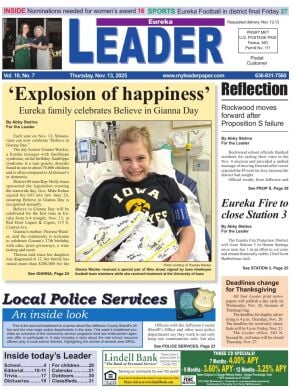
(Photo by Mikhail Nilov via Pexels)
The strategic generation? Gen Z is shunning impulse spending in favor of long-term goals.
A new nationwide survey of 2,000 Gen Z Americans revealed one in three (33%) identify as planners who budget, track spending and plan ahead, while one in four (25%) call themselves value-seekers who research and compare before making purchases.
That’s compared to just one in eight (12%) who rated themselves primarily as spontaneous purchasers, buying what they want when they want.
Contrary to stereotypes that paint Gen Z as frivolous spenders, the data revealed a generation that’s thoughtful, intentional and grounded in practicality. Conducted by Talker Research on behalf of Affirm, the survey found that today’s young adults are focused on building financial stability.
Nearly two-thirds (64%) said they regularly think about their financial future, and seven in 10 (70%) described their approach to money as financially realistic (43% said realistic and 27% said a mix of idealistic and realistic).

Frederick Warren
That realism also shows up in how Gen Z manages their money. In the past year, nearly half (45%) have contributed to savings, while about two in five sought out rewards or deals (38%), created a budget (37%) or found ways to earn extra income through side gigs or freelance opportunities (35%).
That sense of practicality extends into everyday life, too: Nearly half (45%) live with family or guardians, and about half of respondents (49%) said their current living setup is a result of trying to save money.
When it comes to food, nearly half (45%) mostly cook at home, versus a small number who often order takeout (9%).
In travel, just over one in four (26%) stick to strict budgets, while nearly half (43%) strike a balance between splurging and saving.
For fitness, nearly half (45%) rely on free or low-cost workouts such as outdoor activities or YouTube videos.
Thrifting is also common — nearly one in four (24%) thrift or DIY home décor, two in five (40%) mix new and secondhand, and more than half (58%) apply the same approaches to clothing.

(Photo by Ketut Subiyanto via Pexels)
More than half (52%) prefer fully in-person work, defying assumptions about Gen Z’s desire for remote jobs.
When it comes to how they pay, Gen Z’s approach was revealed to be equally intentional. Instead of relying heavily on credit cards, they use a mix of tools to stay in control.
They’re equally likely to describe credit cards as “risky” and “helpful” (both 22%), while nearly half (45%) said they feel most confident using debit cards.
And when they use buy now, pay later options (14%), nearly half (42%) of these said they do so to spread out the cost of larger purchases — another sign of careful planning rather than impulsivity.
“It’s time to retire the Gen Z caricature,” said Vishal Kapoor, SVP of Product at Affirm. “Gen Z isn’t reckless or disengaged with their finances — they’re intentional about how, when and why they spend. They value flexibility and transparency, using products that help them stay in control and make smart, informed choices that fit their lives. Pragmatic and deliberate, they’re redefining what financial confidence looks like.”

(Photo by cottonbro studio via Pexels)
Survey methodology:
Talker Research surveyed 2,000 Gen Z Americans; the survey was commissioned by Affirm and administered and conducted online by Talker Research between Aug. 21–26, 2025.
We are sourcing from a non-probability frame and the two main sources we use are:
- Traditional online access panels — where respondents opt-in to take part in online market research for an incentive
- Programmatic — where respondents are online and are given the option to take part in a survey to receive a virtual incentive usually related to the online activity they are engaging in
Those who did not fit the specified sample were terminated from the survey. As the survey is fielded, dynamic online sampling is used, adjusting targeting to achieve the quotas specified as part of the sampling plan.
Regardless of which sources a respondent came from, they were directed to an Online Survey, where the survey was conducted in English; a link to the questionnaire can be shared upon request. Respondents were awarded points for completing the survey. These points have a small cash-equivalent monetary value.
Cells are only reported on for analysis if they have a minimum of 80 respondents, and statistical significance is calculated at the 95% level. Data is not weighted, but quotas and other parameters are put in place to reach the desired sample.
Interviews are excluded from the final analysis if they failed quality-checking measures. This includes:
- Speeders: Respondents who complete the survey in a time that is quicker than one-third of the median length of interview are disqualified as speeders
- Open ends: All verbatim responses (full open-ended questions as well as other please specify options) are checked for inappropriate or irrelevant text
- Bots: Captcha is enabled on surveys, which allows the research team to identify and disqualify bots
- Duplicates: Survey software has “deduping” based on digital fingerprinting, which ensures nobody is allowed to take the survey more than once
It is worth noting that this survey was only available to individuals with internet access, and the results may not be generalizable to those without internet access.










